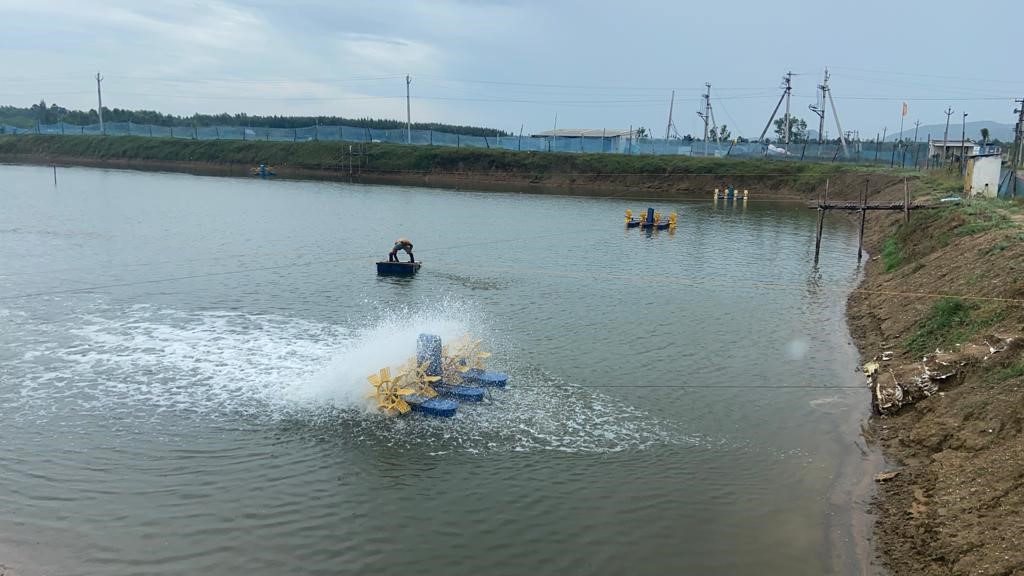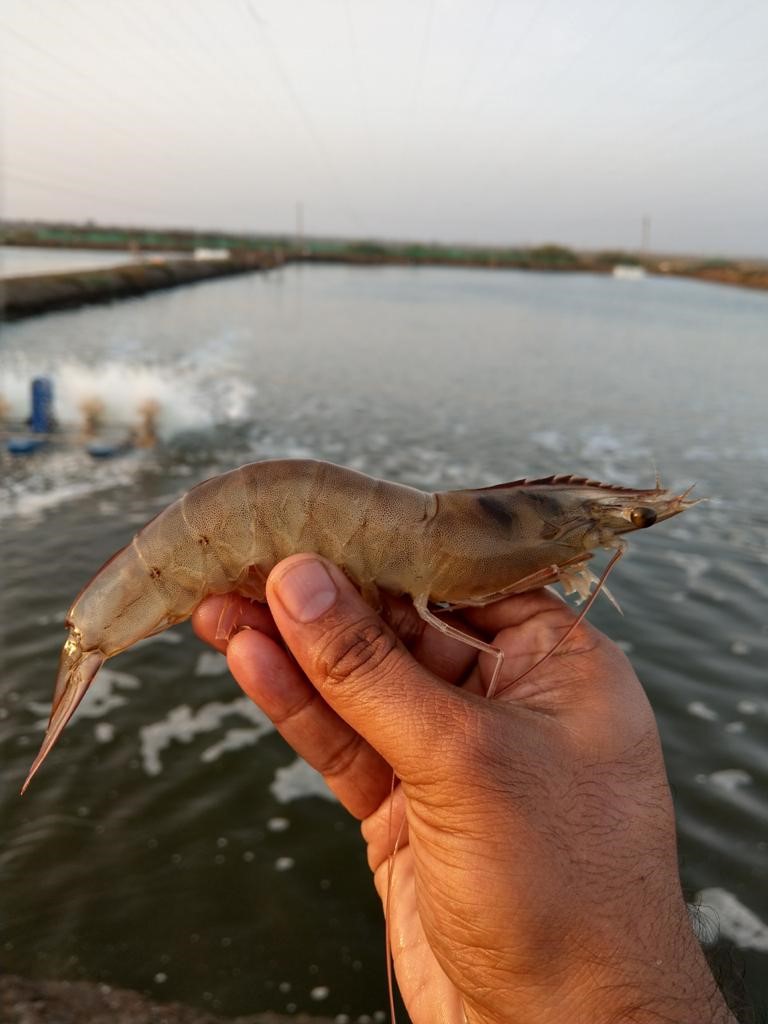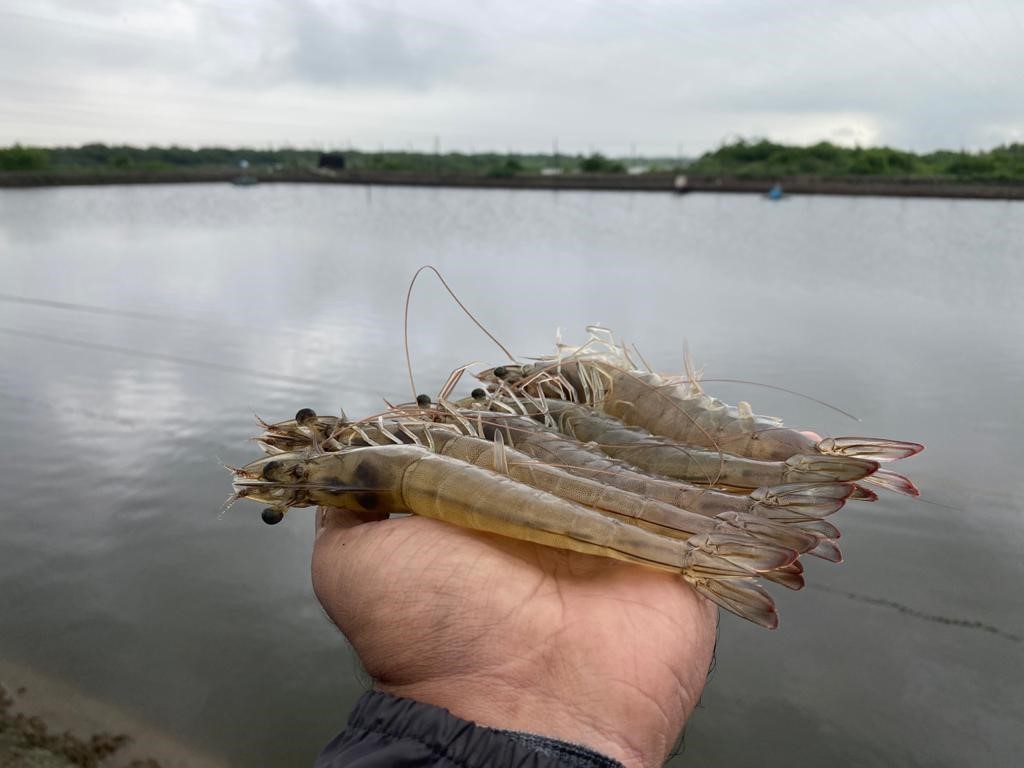In India, temperature drops below 180C in the northern part and all the farmers opt for crop holiday and pond preparation. But coming to the southern part of India, where the water temperature does not drop below 200C, most of the farmers prefer to stock shrimp expecting a better margin at the time of harvesting.
Precautionary Measures for a successful Winter crop in the Southern Region of India for Shrimp Culture

Introduction:
Optimum temperature for rearing shrimp ranges from 280C to 320C. During winter, water temperature drops drastically decreasing the appetite and feed digestibility of the shrimps. At the same time shrimps loses the disease resistance capacity resulting in crop damage and incurring heavy financial loss to the farmers. Understanding the biology of the animals and climatic conditions, adequate precautionary measures must be taken before approaching winter crop.

Important factors of Shrimp species selection during winter crop
Many factors must be considered when a farmer is deciding which species of shrimp, he should culture. Due to their large size and high price, Penaeus monodon and Penaeus indicus are also considered for farming. It has also been seen that both these species are suitable for farming in Kerala's environment. Apart from these candid species other commercially important species such as Metapenaeus monoceros and Penaeus semisulcatus are also potential species that can be grown in India. Another potential candidate species that is flooding the international market is the White leg shrimp, Penaeus Vannamei. However, considering the availability of seed and market demand, most of the farmers prefer to stock L.vannamei than other species.
Impact of Winter season on Shrimp culture and suggestions
- Prone to disease outbreak
- White spot syndrome virus outbreak is more prevalent during winter than in summer. Lower the temperature the virulence of the pathogen will be high, and chances of outbreak is more. At the same time, quality seeds are also an issue at times because of poor conversion rate in hatcheries.
- Seed selection and tight biosecurity implementation is the only way to overcome the disease outbreak. The chance of horizontal transmission is same during winter and summer crop. But the chance of vertical transmission is much higher in winter compared to summer crop. Here comes the importance of seed selection and lab analysis. Make sure our pond preparation is complete before selection of seed
- Preferably select hatcheries having CAA approval and having own maturation unit. Considering the disease outbreak, it is highly recommended to go for hardy line or moderate line depending on the intensity of farming area.
- Apart from the general seed quality analysis in the lab, we recommend farmers to go for cold challenge to eliminate the chance of WSSV before going for real time RT PCR.
- The pathogen will be more virulent at 220 Considering the same, collect the seed from hatcheries and keep in an air-conditioned room for 2 days setting the temperature at 220C. This can activate the pathogen (if any) in the seeds and the chance of getting a proper result is high (Nullify the chances of false negative with RT PCR).
- At the same time, we should get 0 green and <50 yellow CFU for seed Hepatopancreas microbiology.
- Slow growth
- As the length of the day shortens, the drop in sunlight and temperature reduces the hormonal activities of the animals. It has a direct impact in the appetite and digestibility resulting in poor feed consumption. It also reduces the disease resistance power of the animals. All hormonal activities reduce during winters. Once the temperature drops down to 200C or below, shrimps stop eating. But to maintain life and other biological activities, animals use the stored energy resulting in no or negative growth. (Optimum temperature for good growth - 280C to 320C). Night grazing is also reduced during peak winter contributing additional effect on slow growth.
- Shrimps are Poikilothermic animals (Cold blooded); their body temperature will be in equilibrium with the water temperature. So, to adjust the body temperature to the surroundings, it utilizes energy from the feed that they consume having negative impact on the growth.
- To reduce the temperature fluctuation and to have good Hypolimnion in the water column, it is highly recommended to maintain a water depth of 1.6 to 2.0 M. Once the temperature fluctuation is minimized or nullified, animals utilize less energy to adjust the body temperature.
- Pattern of Thermal Stratification
- Epilimnion – uniformly warm water (wind driven water circulation)
- Thermocline – Rapidly fluctuating water temperature
- Hypolimnion – Uniform temperature
- Pattern of Thermal Stratification
- Water quality parameters and primary productivity
- It is highly recommended to treat the pond water with Aqua care 3D after 3 days of chlorination. This helps in eradicating the pathogens that were left untreated during chlorination or germinated after the effect of chlorine subsided. Aqua-Care 3D can function equally well in water with lower temperatures and adds an extra layer to the farm's biosecurity.
- It is difficult to develop a healthy plankton density in the pond environment during winter because of poor metabolic rates and poor multiplication of planktons. The transparency of the pond has a direct impact on the growth of filamentous algae (FA) due to light penetration to the bottom. It can lead to survival issues in the early stage by chocking the gills of the animals. They absorb the minerals and nutrients from the water and grow much faster leading to osmotic stress.
- Chain dragging can be helpful to some extent in developing watercolor and to cease the growth of FA.
- Oxygen holding capacity of the water is high during winters. But the formation of toxic gases like TAN, H2S, Nitrites, Nitrates, etc. and unoxidized materials can become a platform for unwanted pathogens to flourish. At the same time to maintain a healthy microbiota, regular application of water and soil probiotic is highly recommended. But all probiotics may not function with its full efficiency because of low temperature.
- Aqua-Care Control is a multifunctional probiotic that works perfectly in water temperatures above 10℃. It gives invaluable protection against pathogens and Eliminator Smart Pellets which is a bioremediation-oriented product plays a key role in maintaining healthy pond bottom.
- Running aerators along with the support of blowers during sunny hours can benefit to maintain good water temperature and Dissolved oxygen levels. It is also useful in reducing toxic gases and helps in oxidizing organic and inorganic wastes from the pond bottom.
- Molds and fungus
- Chances of mold or micro fungi formation in the feed is more during winter because of high humidity and moisture content. Mycotoxins are naturally occurring toxins produced by certain fungi / molds causing damage to Hepatopancreas and intestine of the shrimps. Feed should be stored in clean and dry place to avoid the mold formation.
- Fumigation of feed storage unit is highly recommended to avoid breeding and multiplication of weevil and other insects during winter.

Other measures:
- Stock shrimp with appropriate density; reduce stocking density compared to stocking in regular crops. To reduce the stress and to provide comfort to the animals, low density farming is highly recommended.
- Ensure good water treatment, pond treatment, and shrimp care throughout the culture.
- Cold Chain Challenge: Take seed 2 or 3 days before the stocking and kept under 22 degrees Celsius for 24-48 hours because this is the best medium, we can provide for the virus to grow rapidly.
- Maintaining water levels should be from 1.2 to 1.4 meters or more. A pond roof will be helpful to reduce the temperature difference
- Increase the running time of aerators, especially when it is cloudy or less sunny during the day and at night to provide enough oxygen for shrimp.
- Stop or reduce feed; do not increase the amount of feed calculated in feeding trays when the temperature drops suddenly.
- Regularly check environmental factors; keep environmental indicators within the appropriate range by periodically using probiotics for pond bottom treatment, pond water treatment, pond bottom siphonage, circulation or changing the water periodically.
- Regularly check the health and growth status of shrimp. Enhance shrimp health and resistance; keep shrimp from temperature shock by mixing vitamins C, and B complex, digestive enzymes into feed and keep the environment stable.
Conclusion
Shrimp has very primitive immune system and are potentially prone to get infected with Pathogen and Environmental stress trigger factors. Although winter crop is more challenging than summer crop it can be successful with strong and efficient biosecurity implementation along with good management practices and healthy pond environment with the right products.